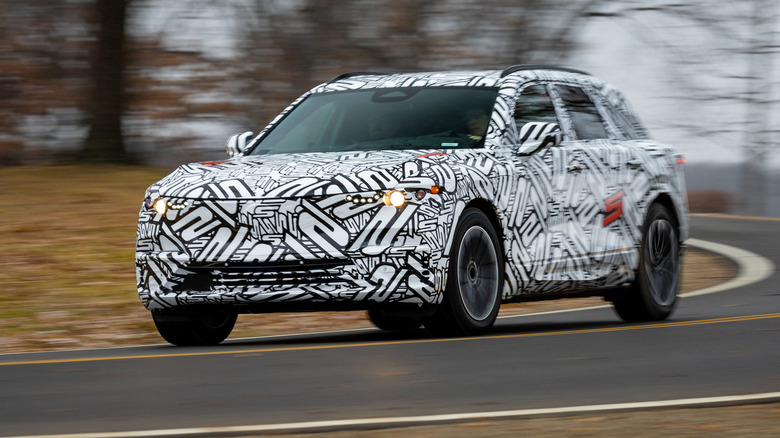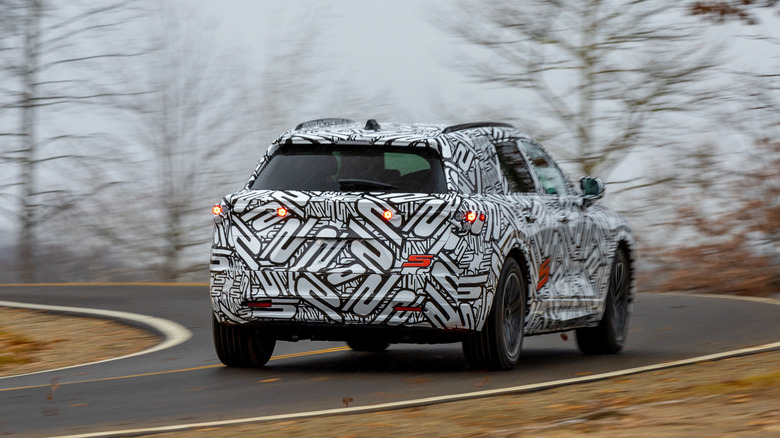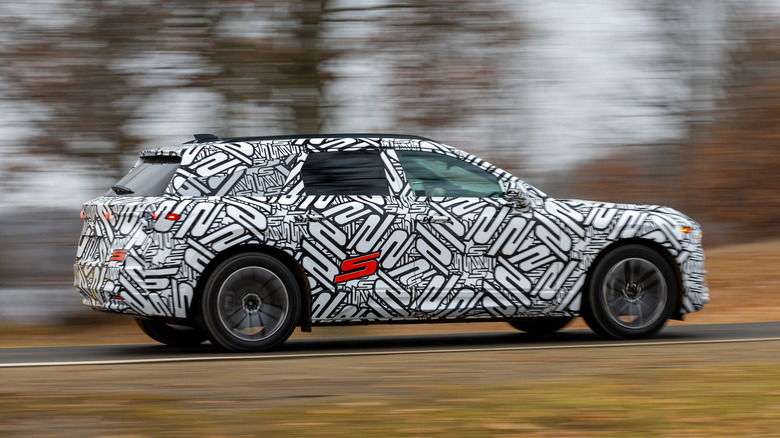This Acura ZDX Type S Teaser Has Us Excited For Performance Electric SUVs
Acura's first all-electric model may not be quite ready for its big reveal, but that hasn't stopped a new teaser of the performance-minded 2024 ZDX Type S from whetting our collective appetites. Though the automaker didn't shy from electrification — as evidenced by the potent NSX hybrid — it's been relatively slow in adopting fully-electric vehicles. The 2024 ZDX SUV will address that omission.
The big question is just how Acura will deliver the sort of engaging performance it's promising with the ZDX Type S. Electric car performance has already demonstrated quite compellingly that they're capable of embarrassing even supercar-level internal combustion models. The straight-line speed and face-melting acceleration of EVs are no problem at all when you have a handful of e-motors to play with.
Come the corners, though, physics tends to play its hand. Though battery-electric vehicles often have a lower center of gravity than their gasoline counterparts — thanks to the low-slung positioning of the battery pack — the sheer overall weight of EVs has an inevitable impact on how nimble they can be. That's even more exaggerated when you're in an electric SUV rather than, say, a sedan like the Porsche Taycan.
Torque vectoring and EVs were made for each other
Electrification does have a trick up its sleeve, though, and it's an approach that Acura is actually very familiar with. Torque vectoring has been a mainstay of the automaker's approach to performance for years, using a trick all-wheel drive system that can mechanically adjust how much power goes to each of the rear wheels. By pushing more power to the outside wheel in a corner, the turn can be tighter, faster, and more controlled.
It's something electric cars can do, too — though arguably in a far more straightforward way. Unlike the clever differential that all-wheel drive SUVs like the MDX use in SH-AWD form, which is responsible for managing power delivery to the rear left and right wheels, an electric version could simply equip each rear wheel with its own motor. By adjusting the power to those motors independently, you could achieve the same torque vectoring result.
In this case, a third e-motor would be required for the front wheels in order to achieve all-wheel drive. Tri-motor EVs are still relatively rare at this stage: The Tesla Model S Plaid uses such a configuration, as does the upcoming Lucid Motors Air Sapphire. GMC's Hummer EV also has a trio of e-motors; one at the front and two at the rear.
Acura has an advantage under the sheet metal
What's interesting is that the Hummer EV uses GM's Ultium platform, and that's also what Acura — and sibling Honda — will be building its first EVs on, too.
For now, Acura is playing its technical cards close to its chest. We don't know what sort of motor configuration the 2024 ZDX Type S will use, though a dual-motor system in the regular 2024 ZDX is almost certain. Tri-motor configurations obviously come with extra expense, since you're adding a third motor and all the accompanying hardware to manage that in the overall drivetrain.
Still, if Acura is to deliver on its promise of having "put the driver experience first" with its electric SUVs, accommodating both hardware and cost might be considered an acceptable complexity. We'll find out more as the 2024 ZDX Type S launch approaches, which Acura stated will happen sometime in 2023. It'll follow the arrival of the 2024 Honda Prologue, the Honda version of the electric SUV that has already been revealed inside and out.


